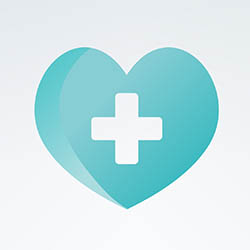

Anemia in newborns (neonatal anemia) is a fairly frequent disease, endangering the health of newborns that in most cases resolves with development (nothing to do with sickle cell anemia or Mediterranean anemia ).
In fact, in most cases we speak of iron deficiency anemia, or that deriving from a lack of iron in the blood. This anemia (measurable with sideremia) emerges especially in the first year of life and is linked to natural processes.

During the development of children, the need for iron is very high. In the first year of life, for example, the volume of blood doubles and consequently the body needs a higher amount of iron.
However, the feeding of infants in the first year of age does not include large quantities of iron and as a result, it is easy for a newborn to have low erythrocytes (low red blood cells).
Iron directly interferes with hemoglobin and allows it to transport and deliver oxygen to tissues. If the child has iron deficiency anemia, it means that their hemoglobin production is low. In short, there is nothing to worry about in case of low hemoglobin (low hgb).
In any case, it is necessary to constantly monitor the parameters to understand if the form of anemia is temporary (as in most cases) or if it is the symptom of a more serious disease.
In fact, iron deficiency conditions the child’s psychomotor development and it is always necessary to contact the pediatrician: after having carried out all the analyzes, he will be able to examine the clinical picture with certainty.
An infant’s need for iron is higher than that of an adult. In most cases, however, the diet in the first year of life requires a scarce introduction of iron. In particular, in the first half of life, the amount of iron necessary for the correct development of the newborn depends exclusively on milk ( maternal or artificial) and on the reserves present in the body.
In breast milk the iron concentration is negligible (0.5 milligrams per liter) but it has the advantage of being almost completely absorbed. As a result, the infant may be “covered” for at least 6 months.
In formula milk, on the other hand, the iron that can be absorbed is less: for this reason, a greater amount of iron is added to this formula, which aims to minimize the chances of a possible iron deficiency anemia. After the first year of age, it is important that the child begins to follow a varied and rich diet capable of guaranteeing the necessary iron intake.
In a newborn, the symptoms of iron deficiency anemia are manifold. First of all, there is no classic vivacity that distinguishes those born in the first months. Children tire easily and are more irritable. In addition to these symptoms, loss of appetite can occur.
At the level of the mucous membranes of the mouth and lower eyelids, a slight pallor may be found: if the iron deficiency is considerable, the pallor can extend to other areas of the skin. Other signs characterizing the lack of iron are the fragility of the hair and nails, which can appear thinner.
Iron deficiency can also cause small cracks in the mouth (angular cheilitis). In the most severe forms, sleep disturbances may emerge (the legs tend to move excessively during the night and for this reason it is also referred to as restless legs), tachycardia and wheezing .
If iron deficiency is suspected, a blood test (complete blood count) is needed to evaluate the iron present in the blood (hemoglobin) and to understand the amount and shape of red blood cells in the blood.
If you have small (or smaller than normal) red blood cells, you are likely dealing with a form of microcytic anemia. And if there is a reduced concentration of hemoglobin in these red blood cells, it is referred to as hypochromic microcytic anemia.
In some forms of anemia, the blood count can reveal an increase in platelets. High platelets in children do not, in general, indicate an underlying disease and can be a sign of inflammation (platelets increase dramatically whenever there is an infection). Low platelets in children, on the other hand, are less frequent and in some cases are the symptom that characterizes some infectious diseases.

If you have an iron deficiency, your pediatrician is likely to be able to administer some supplements. You should never proceed with do-it-yourself treatments: the pediatrician will always prescribe the most suitable dosage based on the analyzes carried out.
Usually, the expected amount is 3 mg for every kg. To achieve any significant results, at least 3 months of therapy are required. In addition to supplements, it is necessary to prefer a diet that includes the intake of foods that contain iron: lean red meats, turkey, chicken, tuna, cod and salmon.
In parallel, it is also necessary to associate foods containing vitamin C (grapes, citrus fruits, kiwis, peppers, tomatoes, lettuce, oranges, cabbage and broccoli). Instead, foods that contain substances that prevent our body from taking in iron (milk, cheese, tea and chocolate) should be avoided.